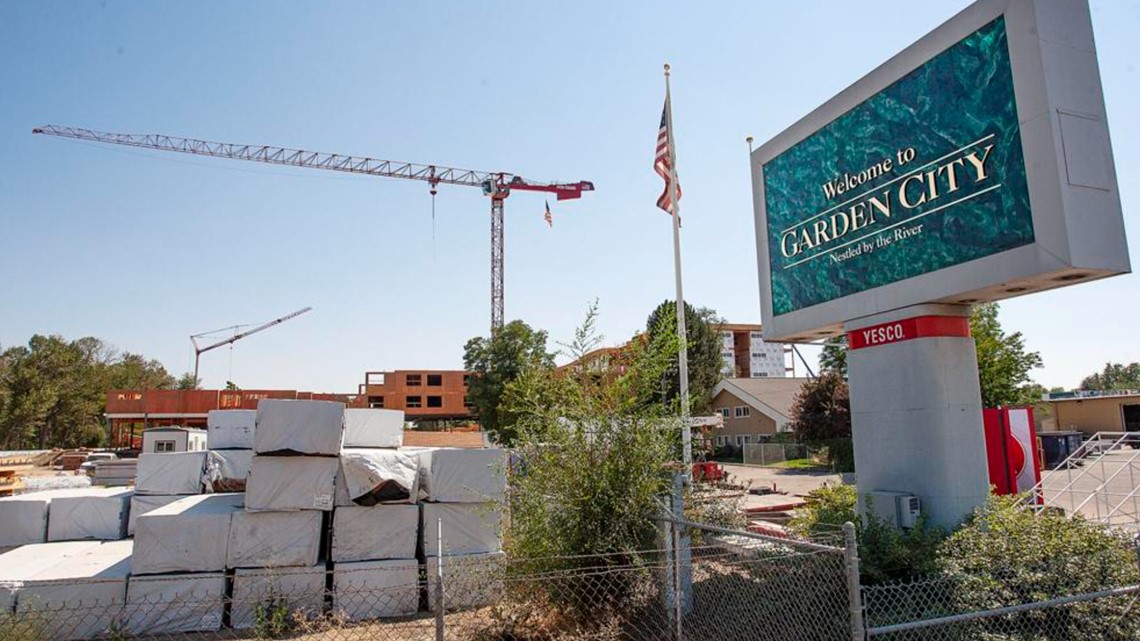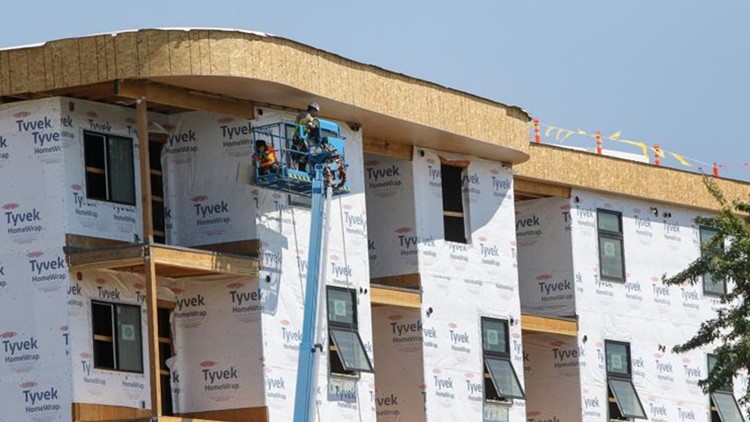GARDEN CITY, Idaho —
This story originally appeared in the Idaho Press.
Garden City has a lot of good stuff going for it, and its future is bright — if it chooses to act now.
That was the one of the main takeaways at a presentation by members of the Urban Lands Institute to Garden City leaders Friday morning. Members of the institute — real estate and planning experts from around the country — visited the city for five days and conducted over 100 interviews with local stakeholders to present initial findings and recommendations for city improvements, and to create a report offering recommendations and resources for the city going forward.
The area in question is bounded roughly by the Boise River to the north, Chinden Boulevard to the south, 40th Avenue to the east, and 48th Street to the west. Friday’s presentation highlighted some opportunities for the city.


HOUSING AND OVERALL CHARACTER
Friday’s speakers agreed on the benefits afforded to the city by having a variety of building types as well as natural areas and like the Greenbelt.
“What sets this neighborhood apart is its eclectic mix of uses, with artists and industrial businesses and residents all coexisting and benefitting from the beautiful assets of the Boise River and the Greenbelt,” said Geeti Silwal, an urban planner with San Francisco-based company Perkins and Will, who participated in the visit this week.
Agnes Artemel, a real estate consultant from Virginia, suggested keeping a decent share of industrial spaces and encouraging development of denser multifamily housing.
But the presenters cautioned that development must be done thoughtfully to enable current residents of all income levels to stay and to attract residents of all income levels to live in the area.
Alexandra Elias, president and CEO of Renew Moline in Illinois noted, “The city’s effort to improve or remove substandard housing is touted as successful, but there have been unintended consequences.” She also said the city is lucky to have interest from developers who care about affordable housing, but noted that rising land prices will continue to pose a challenge to its construction.


There is a lack of senior housing in the city, as well as housing for residents with a range of physical abilities, Elias said. Some low-income residents are being displaced, she said. But people in the city have expressed interest in improvements such as denser housing and bolstering affordable housing, she said.
Part of the city’s master plan includes an action item to create a housing commission to address affordable housing needs, Elias said.
“We recommend the housing commission should be established and the city evaluate ways to improve housing stability for low-income residents,” she said.
Elias also suggested offering incentives to developers through zoning ordinances that encourage them to support project features “they may not normally provide.” This could include building affordable housing, constructing pocket parks, or building housing with some larger units for families, she said.
ENVIRONMENTAL RESILIENCY, PARKS, AND OPEN SPACE
The presenters also offered suggestions for improving and creating more natural features in the city. Improvements such as encouraging the planting of trees and flowers would amount to “putting the ‘garden’ back in ‘Garden City,’” said Emily Rogers, a senior landscape architect from Albuquerque, New Mexico.
Rogers also presented extensively on potential Greenbelt improvements. Those could include creating better access points, implementing a speed limit and encouraging e-bicyclists to use alternative routes, providing more benches and places to sit, and creating eddies, or spaces where cyclists and walkers can pull off.
Raising the Greenbelt could also provide flood control and stormwater improvements, Rogers said. The city is already discussing flood control improvements with the U.S. Army Corps of Engineers.
Overall, Rogers suggested the city envision and plan Greenbelt improvements thinking of the area as a park rather than a trail.
She also suggested that the city could prioritize purchasing a parcel and turning it into a park that could serve as an open space, as well as a town center for the city. The Land and Water Conservation Fund, a federally funded organization, says residents of urban areas benefit when they are a 5-10 minute walk from a park, she said. Ideally, that would be true for all residents of the area, she said.
TRANSPORTATION
For transportation, presenters said Garden City has opportunities to improve mobility for car users, as well as people using other modes of transportation.
The presenters envisioned developments and improvements along Adams Street to make it into a thriving east-west transportation thoroughfare. Erwin Andres, vice president and senior principal at at Washington D.C. transportation, suggested including several options for incorporating more parking, sidewalks, and bike lanes along that street.
Walkability could be improved by adding sidewalks to areas that don’t have them, Andres said.
Another factor that complicates transportation in the city is its long blocks. The city’s blocks range between 800 and 1,500 feet in length, whereas walkable blocks are more in the range of 300 feet, Andres said. It is more difficult for cars to circle long blocks, and for pedestrians to navigate from block to block, Andres said.
The city could consider breaking up long blocks by building pedestrian-only pathways through them, which run about 10 feet in width, or narrow streets, that would be about 20 feet in width, he said.
Other suggestions included building at least one additional bridge between the Boise side of the river and the Garden City side, creating a school transportation master plan, and conducting public parking feasibility studies.
ACHIEVING THE VISION
Tom Murphy, the former mayor of Pittsburgh, emphasized the need for the city to think strategically about what it wants to be rather than getting bogged down by cost concerns or approving development projects whose vision does not match that of the city’s.
“When I was mayor, developers … would come in and say, ‘Mayor, I have a great idea for you,’” he said. “And we would say, ‘with all due respect, tell us why it’s a great idea for you, and we’ll decide whether it’s a great idea for us.’”
Murphy said his city remade itself from being primarily industrial to high tech.
Defining what the city wants to be should come from both the public and private sector, he said. To develop such a vision, Murphy recommended that the city add two positions: a vision manager who can talk to community members, and an entrepreneurial expert adept at pursuing financing through grant writing and other means.
Murphy described Pittsburgh as a “flat broke city” that still managed to do billions of dollars worth of deals utilizing both public and private financing. But it takes dynamic leadership, and leaders who can articulate the vision to every resident, he said.
He said he went to many meetings, and there are always complaints about different factors of a project, such as cost and size.
“They’re all excuses,” he said. “It’s never about any of that. It’s about whether you have the community and political will to reach for the future. Kick that door down; reach for the future.”
This story originally appeared in the Idaho Press. Read more at IdahoPress.com
Watch more Local News:
See the latest news from around the Treasure Valley and the Gem State in our YouTube playlist:



